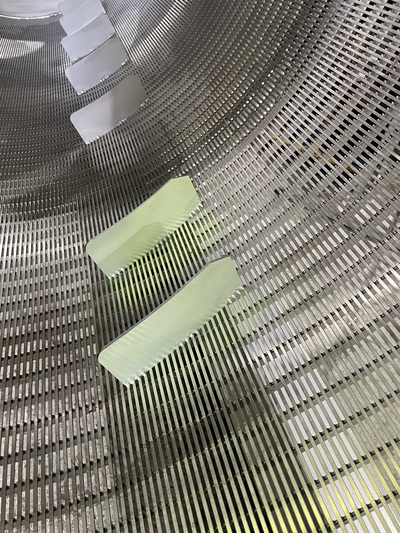This post was originally published on Sustainability Matters

Two Queensland councils* have opted for Australian-manufactured screening technology to protect the efficiency of their wastewater treatment plants (WWTPs).
In choosing horizontal in-channel rotary drum screening technology engineered by CST Wastewater Solutions, the councils also sought to curtail risks of process and environmental spills from blockages.
CST Wastewater Solutions’ full stainless steel drum technology — with fine pre-screening down to 200 µm — provides a first line of defence against detritus in municipal and industrial wastewater streams entering vital water treatment processes within the WWTPs involved.
The company explained that an integral part of its new, locally manufactured rotary drum screens and auger extractors is industry-best screening, which provides 50% finer apertures for greater waste-solids extraction and recovery.
Drum screens reduce maintenance costs and extend equipment life by preventing clogging and build-up of solids, and prevent the formation of filtrate crusting on the primary clarifier, which is essential for the treatment plant to operate optimally.
CST Wastewater Solutions Managing Director Michael Bambridge said the in-channel (or in-tank) drum screens are custom-engineered for unique local conditions, including widely varying flow rates and inflow content. He added that the systems also recognise the need to cater to municipal and industrial companies that cannot afford to have large in-house engineering and maintenance teams.
One of the latest Queensland installations involved twin screw screens, constructed from full 316 grade stainless steel, with each screen capable of handling 230 L of inflow a second. The Australian-manufactured screens replaced imported screens that were less than 10 years old.
“The second twin-screen installation, with fine drum screening down to 3 mm and 400 L/s capacity, was installed by a major utility operating in a marine environment that was impressed with the performance and durability of existing CST screening technology,” Bambridge said.
“Existing high performance, low maintenance and, importantly, the prompt availability of local service expertise were among the prime reasons for this major authority introducing further CST technologies to maintain and enhance the performance of a WWTP operating in a marine environment,” he added.
CST has drum screens with holes as fine as 2 mm that have been operating for more than 10 years in Queensland.
Bambridge said that rather than opting for one-size-fits-all imported technologies — with potential downtime and supply chain issues when they need service — many local authorities and industrial WWTP operators value the availability of local engineering expertise.
“Good local service is an essential complement to good equipment. Imported equipment is always at the mercy of supply chain delays and cost. Such equipment could be useless the first time it broke down, until it is repaired,” he said.
“Then, both municipal and industrial organisations face the risk of non-compliance of licence conditions and downstream blocking, flooding, production interruptions, and environmental and groundwater hazards.”
CST has been progressively moving towards Australian manufacturing since COVID affected supply chains. It has now achieved full Australian design and manufacture of the following ranges:
- Internally fed rotary drums — Model RDs
- In-channel horizontal rotary drum — Model FS
- Screw screens and associated equipment — Model SF
*The municipalities cannot be named for client contractual reasons
Top image caption: Drum screens are installed to remove solids from wastewater, protect downstream equipment and improve efficiency. Images courtesy of CST Wastewater Solutions.





0 Comments